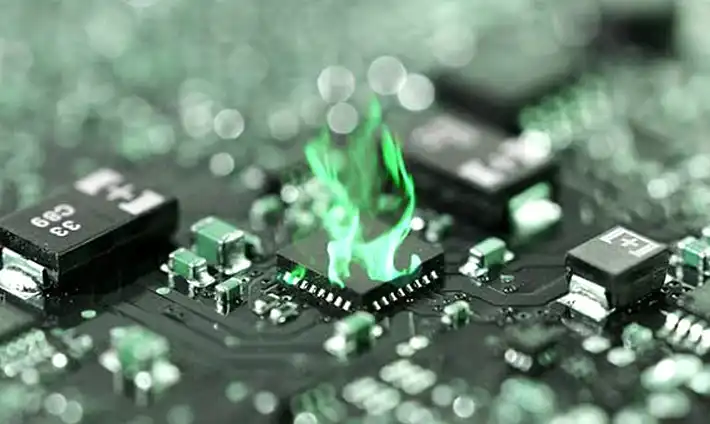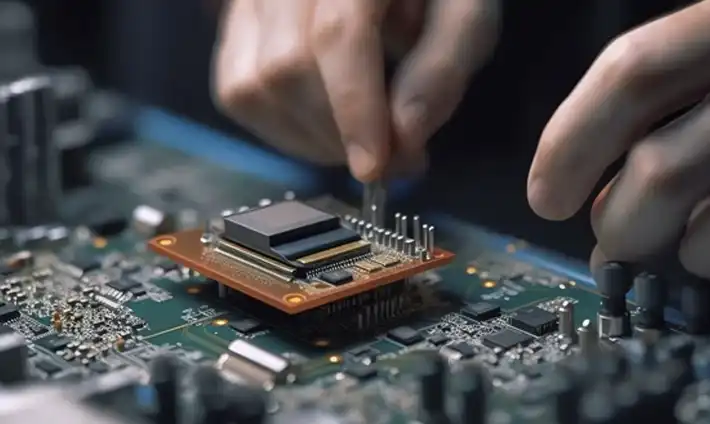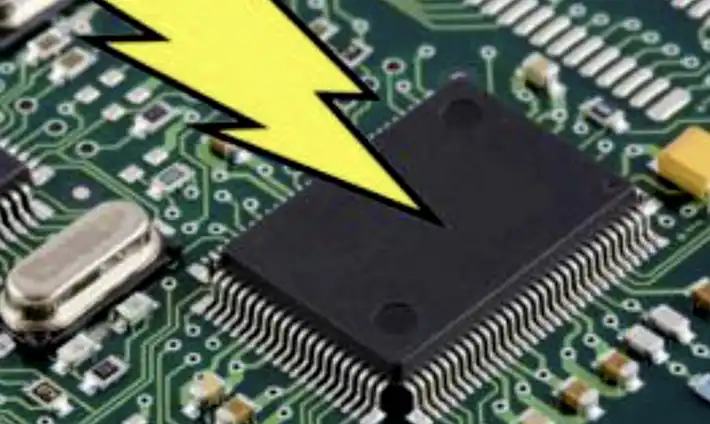Electrostatic discharge (ESD) poses a significant threat to electronic components, causing irreparable damage and potentially rendering devices useless. Understanding how to prevent ESD damage is crucial for anyone handling sensitive electronic equipment.
In this guide, we’ll delve into the intricacies of ESD damage, explore effective prevention methods, and provide valuable insights to help you safeguard your electronic components effectively.
Understanding ESD Damage to Electronic Components

Electrostatic discharge (ESD) occurs when two objects with different electrical charges come into contact or close proximity, resulting in the sudden flow of electricity between them.
This phenomenon can occur naturally or be induced by human activities, such as walking across a carpeted floor or handling electronic devices. ESD poses a significant risk to electronic components, as even a small discharge of static electricity can cause damage.
Recognizing the Signs of ESD Damage
Identifying ESD damage in electronic components can be challenging, as the effects may not always be immediately apparent. However, common signs of ESD damage include:
- Malfunctioning Components: Electronic devices may exhibit erratic behavior or cease to function altogether.
- Visible Damage: Inspecting components for physical signs of damage, such as burnt marks or melted circuits, can indicate ESD damage.
- Reduced Performance: ESD damage can compromise the performance and longevity of electronic components, leading to decreased efficiency and reliability.
The Impact of ESD Damage on Electronic Devices
ESD damage can have far-reaching consequences for electronic devices, including:
- Component Failure: ESD can cause internal damage to electronic components, leading to component failure and system breakdowns.
- Data Loss: In addition to hardware damage, ESD can also result in data corruption or loss, compromising critical information stored on electronic devices.
- Financial Loss: Repairing or replacing ESD-damaged components can be costly, resulting in financial losses for individuals and businesses alike.
Common Causes of ESD Damage
Several factors can contribute to the occurrence of ESD damage, including:
- Human Touch: Handling electronic components without proper ESD protection, such as grounded wrist straps or antistatic mats, can result in ESD damage.
- Environmental Conditions: Dry environments with low humidity levels are conducive to ESD, as static electricity accumulates more readily in such conditions.
- Improper Handling: Mishandling electronic components during assembly, testing, or transportation can increase the risk of ESD damage.
Preventing ESD Damage: Effective Strategies

Mitigating the risk of ESD damage requires a proactive approach and adherence to best practices. Here are some effective strategies to prevent ESD damage to electronic components:
Utilize ESD-Safe Workstations
Establishing ESD-safe workstations equipped with antistatic mats, grounded wrist straps, and conductive flooring can help create a controlled environment that minimizes the risk of electrostatic discharge.
Implement Proper Handling Procedures
Train personnel on proper handling procedures for electronic components, emphasizing the importance of ESD protection measures and safe handling practices.
Invest in ESD-Protective Packaging
Utilize ESD-protective packaging, such as antistatic bags and bubble wrap, to shield electronic components from static electricity during storage, transportation, and handling.
Control Environmental Factors
Maintain optimal environmental conditions, such as humidity levels and temperature, to reduce the buildup of static electricity and mitigate the risk of ESD damage.
Regular Maintenance and Inspection
Conduct routine maintenance and inspections of electronic equipment to identify and address potential ESD vulnerabilities before they escalate into major issues.
Static Control Training
Provide comprehensive static control training to personnel involved in handling electronic components, empowering them to recognize and prevent ESD damage effectively.
How Can ESD Be a Hazard to Electronic Computer Components

Electrostatic discharge (ESD) presents a significant hazard to electronic computer components due to its potential to cause irreversible damage. ESD occurs when there is a sudden flow of electricity between two objects with different electrical charges. In the context of electronic computer components, ESD can occur during various stages, including manufacturing, assembly, installation, and everyday use.
ESD poses a threat to electronic computer components primarily because these components are highly sensitive to even minor fluctuations in electrical voltage. When exposed to ESD, components such as microchips, transistors, capacitors, and circuit boards can suffer immediate or latent damage, leading to malfunctions, reduced performance, or complete failure.
One of the main reasons ESD is hazardous to electronic computer components is its ability to disrupt the delicate circuitry within these devices. Modern electronic components are designed with intricate pathways and connections that facilitate the flow of electrical signals. However, the discharge of static electricity during an ESD event can introduce unexpected currents or voltages into these pathways, resulting in unintended consequences such as data corruption, memory loss, or physical damage to the components themselves.
Moreover, ESD damage may not always be immediately apparent, which adds to its hazardous nature. While some components may exhibit visible signs of damage, such as burnt marks or melted circuits, others may suffer internal degradation without any outward indication. This latent damage can manifest over time, leading to intermittent failures or gradual deterioration in performance, ultimately compromising the reliability and functionality of electronic computer systems.
Furthermore, ESD can be particularly problematic in environments where electronic computer components are handled or installed frequently, such as manufacturing facilities, laboratories, or data centers. Without proper precautions and ESD mitigation measures in place, the risk of ESD-induced damage increases significantly, posing a constant threat to the integrity of electronic computer systems and the data they process or store.
What Type of Damage Can ESD Cause to Electronic Components

Electrostatic discharge (ESD) can wreak havoc on electronic components, causing various types of damage:
1. Immediate Failure: In some cases, ESD can result in immediate failure of electronic components. This occurs when the discharge of static electricity exceeds the component’s tolerance level, leading to irreversible damage and rendering the component non-functional.
2. Degradation of Performance: ESD can also degrade the performance of electronic components over time. Even if a component doesn’t fail immediately after an ESD event, it may experience subtle changes in its electrical characteristics, leading to decreased efficiency, reliability, or lifespan.
3. Intermittent Issues: ESD damage may manifest as intermittent issues or glitches in electronic devices. These issues can be frustratingly unpredictable, occurring sporadically and making troubleshooting difficult. Intermittent ESD damage often results from partial or temporary disruptions to the component’s functionality.
4. Latent Damage: Perhaps most insidious is the latent damage caused by ESD. This type of damage may not be immediately apparent and can go unnoticed until it manifests as a more significant problem later on. Latent ESD damage can compromise the long-term reliability and stability of electronic components, leading to unexpected failures or malfunctions down the line.
5. Data Corruption: ESD events can also result in data corruption or loss, particularly in electronic devices that store or process sensitive information. When static electricity interferes with the operation of electronic components, it can corrupt data stored in memory or disrupt the transfer of data between different parts of the system.
FAQs
How does electrostatic discharge (ESD) occur?
ESD occurs when two objects with different electrical charges come into contact or close proximity, resulting in the sudden flow of electricity between them.
What are the common signs of ESD damage in electronic components?
Common signs of ESD damage include malfunctioning components, visible physical damage, and reduced performance.
What measures can I take to prevent ESD damage to electronic components?
To prevent ESD damage, utilize ESD-safe workstations, implement proper handling procedures, invest in ESD-protective packaging, control environmental factors, conduct regular maintenance and inspection, and provide static control training to personnel.
How does ESD damage impact electronic devices?
ESD damage can lead to component failure, data loss, and financial losses due to repair or replacement costs.
What are some common causes of ESD damage?
Human touch, environmental conditions, and improper handling are common causes of ESD damage to electronic components.
Why is it important to address ESD vulnerabilities proactively?
Addressing ESD vulnerabilities proactively helps minimize the risk of component failure, data loss, and financial losses associated with ESD damage.
Conclusion
Electrostatic discharge (ESD) poses a significant threat to electronic components, but with proper awareness and preventive measures, the risk of ESD damage can be mitigated effectively. By implementing ESD-safe practices, utilizing protective packaging, and providing comprehensive training, individuals and businesses can safeguard their electronic components and minimize the impact of ESD damage on their operations.
Remember, prevention is key when it comes to protecting electronic components from ESD damage. By prioritizing static control measures and investing in the right equipment and training, you can ensure the longevity and reliability of your electronic devices.